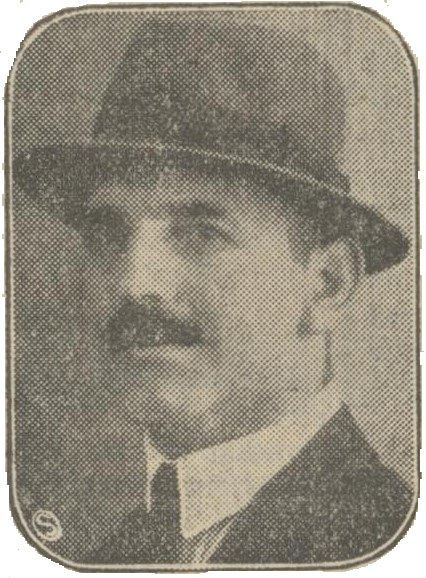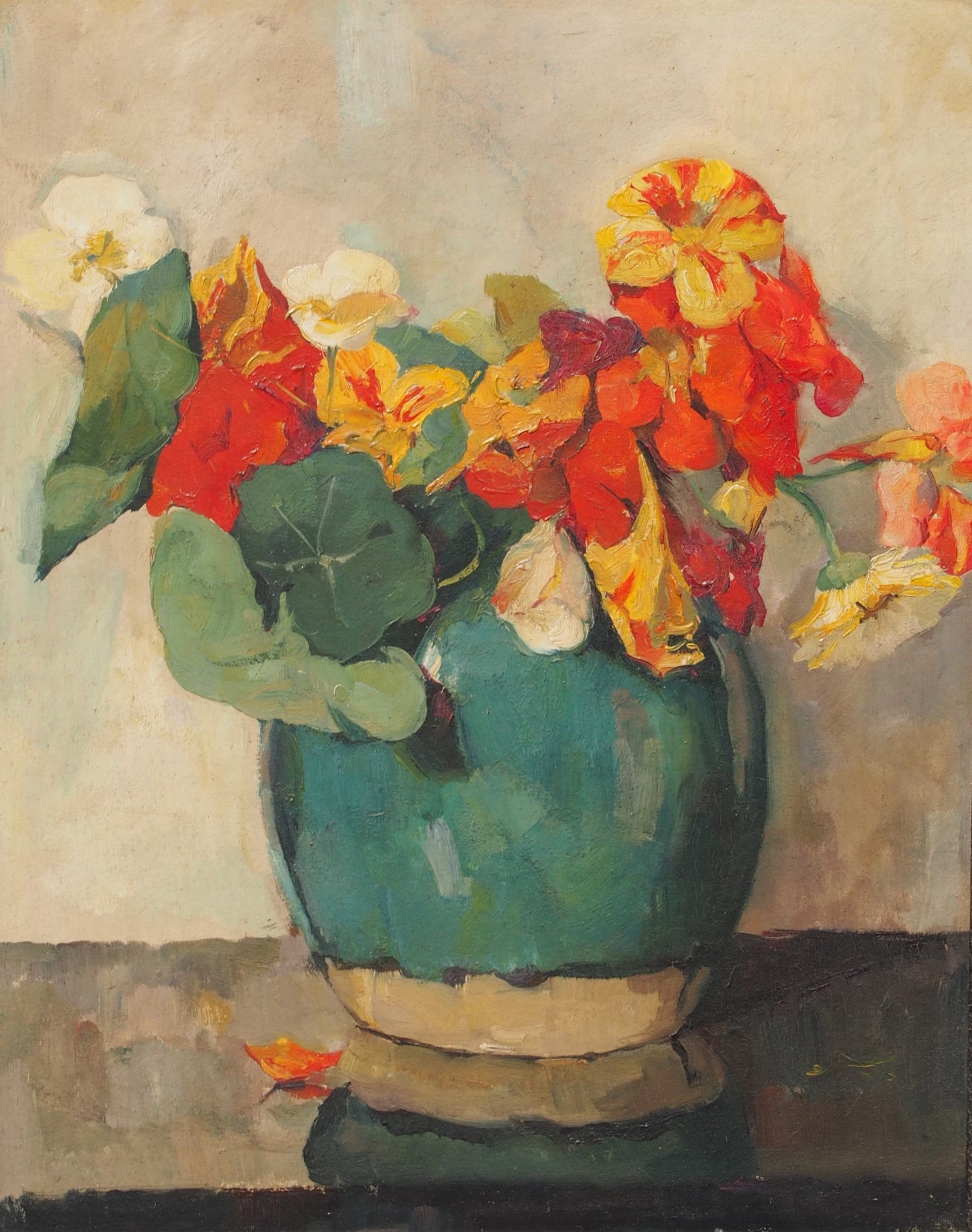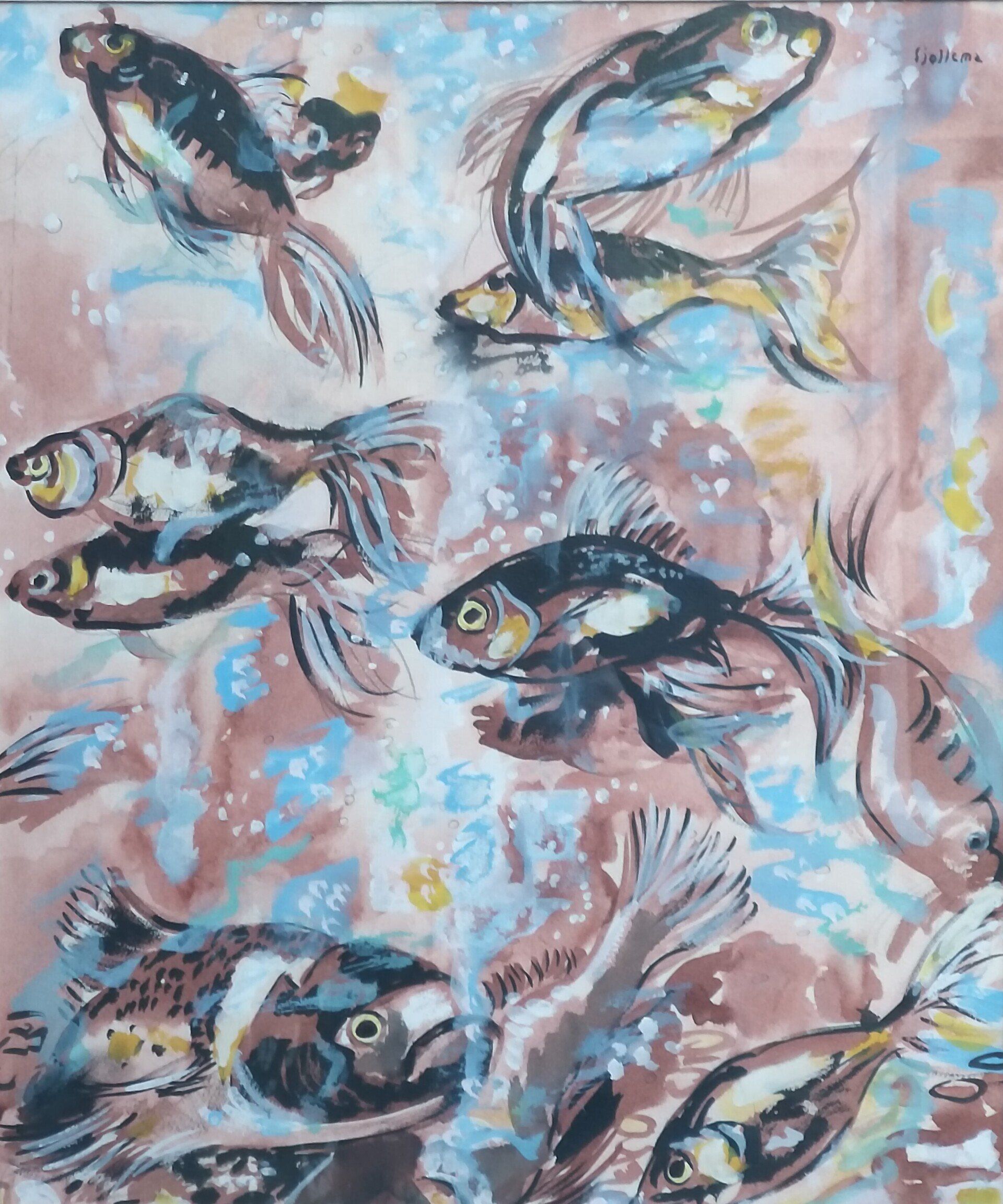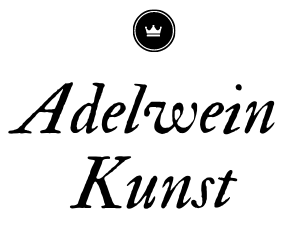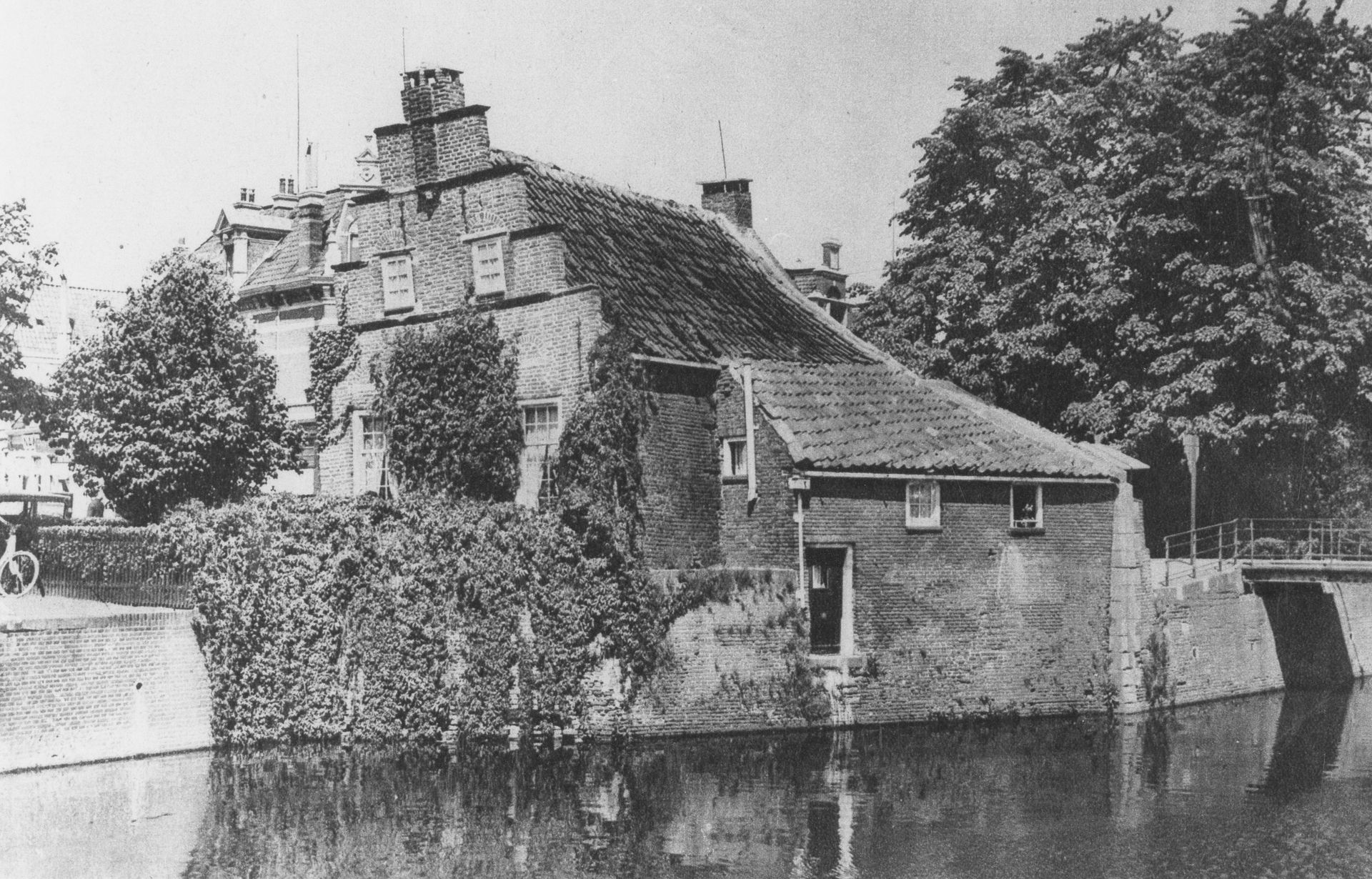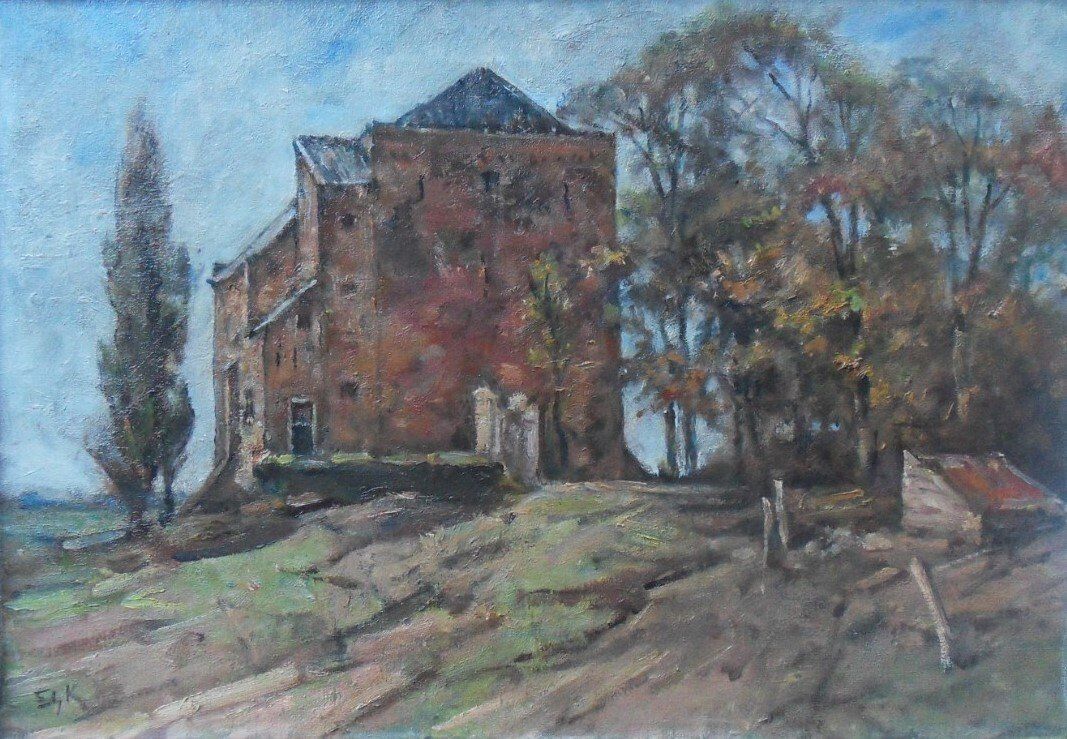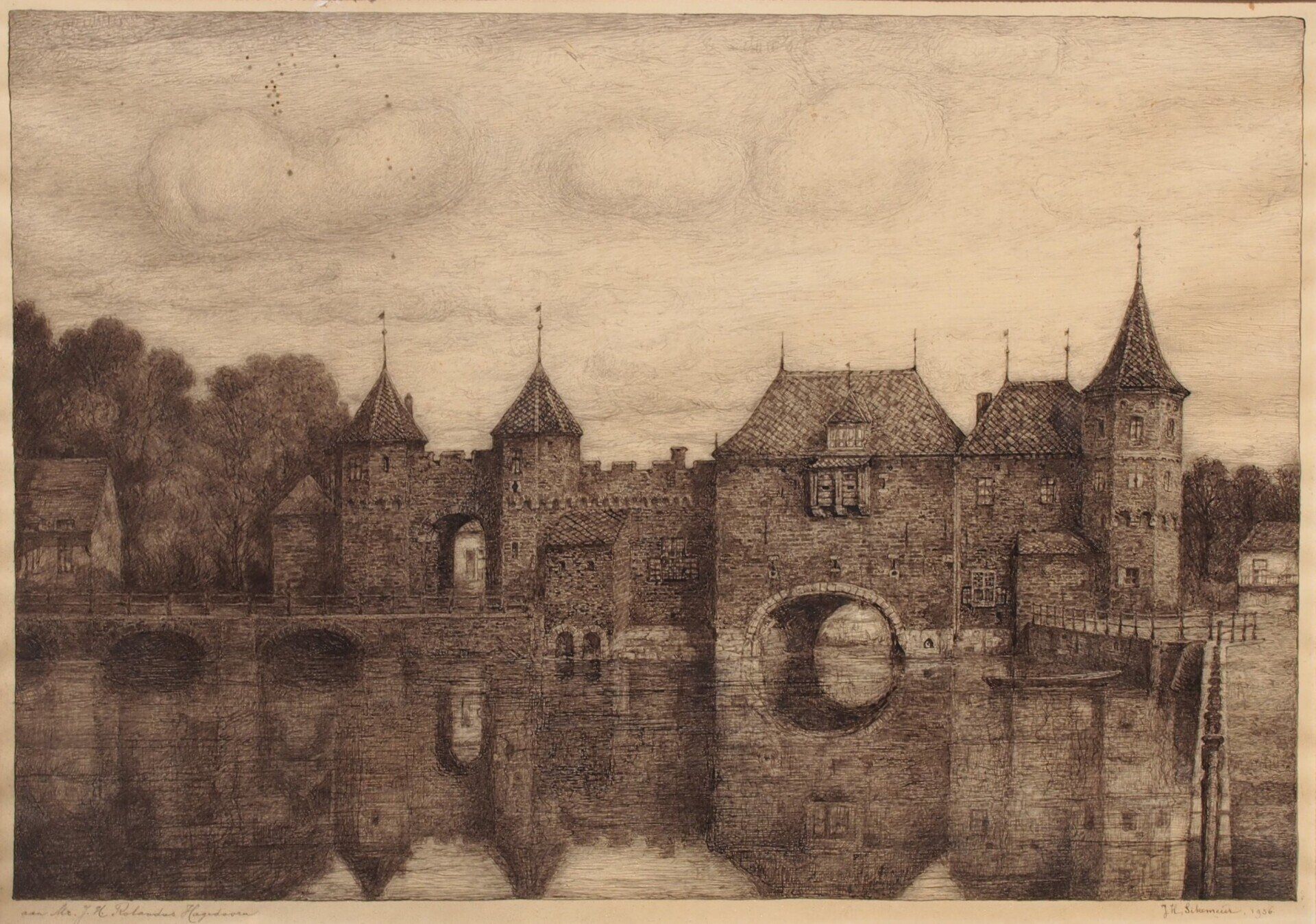CASTLE OF NIJENBEEK - by EDZARD KONING
On the right bank of the IJssel River, just before Zutphen, lies the ruins of Nijenbeek Castle. The tower is a remnant of a much larger complex that suffered much from demolition in the 16th century, to build fortifications against the city of Deventer, and from war. In 1586, the Earl of Leicester captured the castle from the Spaniards for the United Provinces, and a century later the army of Johan Maurits of Nassau was routed by the troops of the French king Louis the XIV.
During World War II, the remaining tower was further destroyed after a bombing of a German army unit entrenched in the castle. Especially the east side including the gatehouse was heavily damaged. For almost 70 years nothing happened to the castle except for some local strut work. Vegetation was rampant and crows nested in the tree growing from within on the tower edges. Only in 2015 was the castle consolidated to stop further decay.
We still know what the castle looked like before World War II by the many paintings made of this beautiful location in the past. It is therefore not surprising that Nijenbeek Castle was included in the 1916 Verkade album De IJsel. The Verkade family had a great affinity for art and developed travel albums during World War I due to the increased interest in nature. The images for these albums were provided with the purchase of Verkade products.
The text in the album De IJsel tells about the old towns and villages with castles, country houses and beautiful nature along the IJsel river in Gelderland and is written by Jac. P. Thijsse. The pasted-in color plates are after watercolors and studies by painters Jan Voerman, L.W.R. Wenckebach and Edzard Koning.
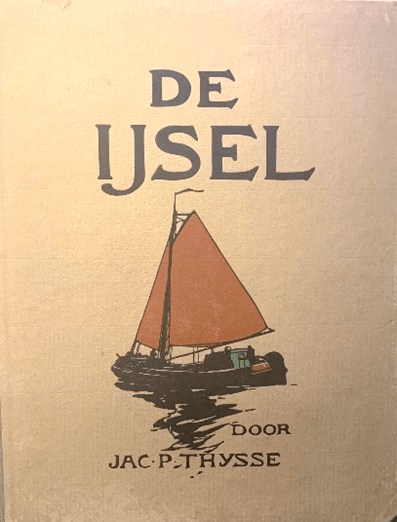
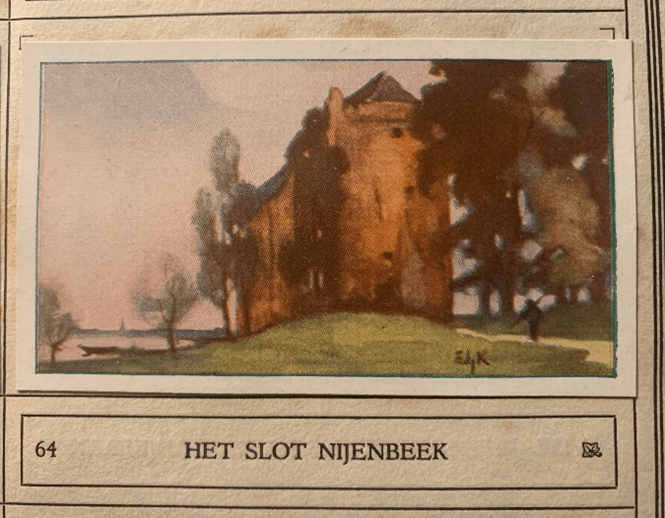
In this beautiful edition, the remaining tower of Nijenbeek Castle comes completely to life through Thijsse's tasteful storytelling:
"now we have yet to see Nijenbeek from the inside. It is well maintained by the present owners: there is a hall with weapons and a large kitchen with all kinds of utensils and also, and this is the most important thing in many people's eyes, a small corner room, where from 1364 to 1371 Reinout III, 'the fat duke', was held prisoner by his brother Edward. First he had been at Rosendaal. On several incontrovertible grounds it can be proved, that on release he was not so fat, that the door had to be broken out, as we used to learn in old-fashioned patriotic history."
The color plate with the miniature painting of Nijenbeek Castle is by Edzard Koning. It shows the north facade with entrance to the tower, surrounded by poplars and other trees with the bank of the river IJssel on the left. Behind the entrance door was a large kitchen with a large tiled fireplace. Spiral staircases took you to the upper floors with the bedrooms and the knight's hall, from which there was a beautiful view of the surroundings, with a rich alternation of woods and farmlands and between which, like a winding silver ribbon, the IJssel River and, in the distance, the city of Zutphen.
One of the studies Edzard Koning made for the watercolor in the Verkade album is included in Konings Kunst, a 2008 publication on the work of brothers Arnold and Edzard Koning. It concerns a small oil painting. A larger and much more elaborate oil painting Edzard made of Nijenbeek Castle is in the collection of Adelwein Kunst. The 1916 work with bright and fresh colors shows our castle Nijenbeek before the bombing. The painting was exhibited at an exhibition in January 1940 at art dealer P. Leffelaar at Wagenweg 102 in Haarlem. As in the watercolor in the Verkade album and the previously mentioned study, the north facade of the tower with the entrance is depicted, surrounded by tall trees and on the left the IJssel River. In the 1999 book Natural Verkade, verhaal van de albums, Edzard Koning is described as a skilled topographer and specialist in painting landscapes. His romantic paintings give the album a distinctive charm.
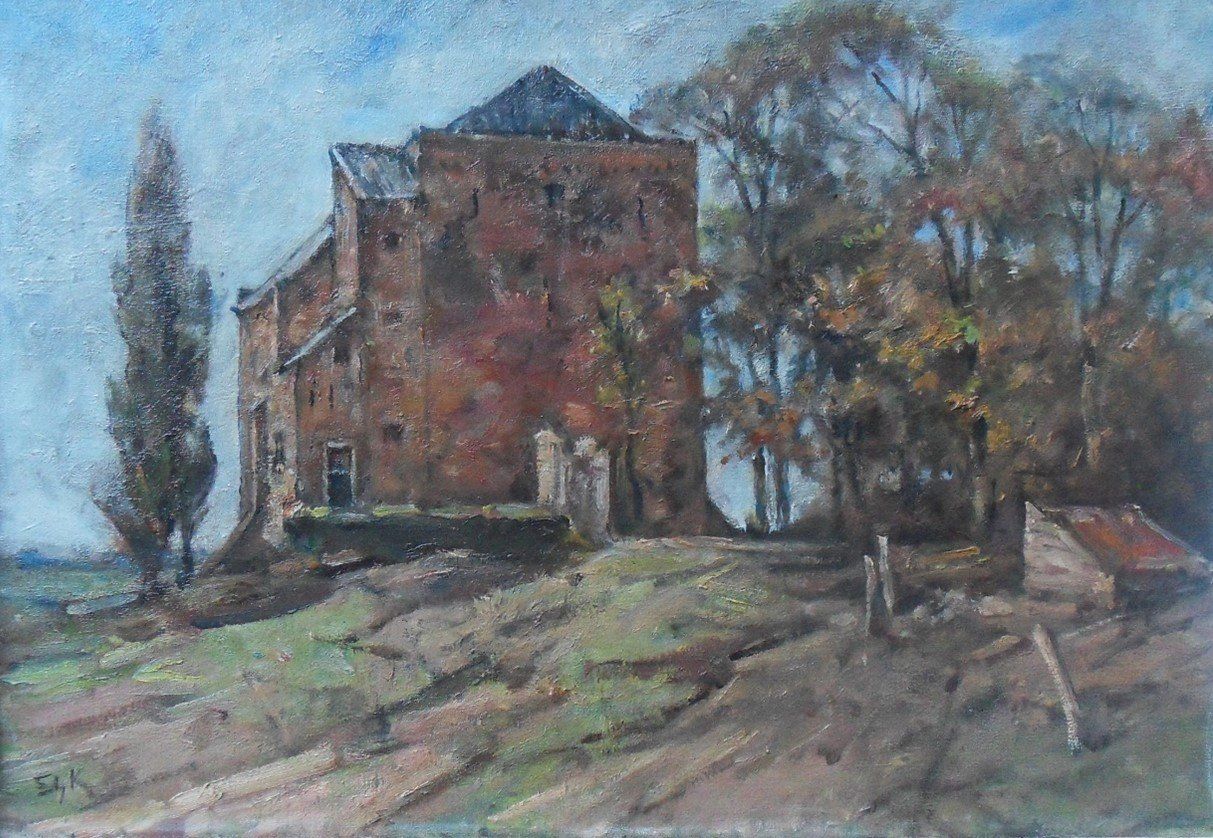
His constant study of the Dutch landscape and the observation of nature and buildings inspired him numerous motifs. To these he felt attracted and managed to capture the collected images in pure paintings full of atmosphere and mood. His paintings always possess an attractive color palette and a special upholstery of the landscapes and buildings and thus sometimes rise above reality to the romantic. And that romanticism is exactly what Edzard Koning managed to evoke with the painting of the Nijenbeek castle ruins, the realization that time is passing and a nostalgic longing for yesteryear.
